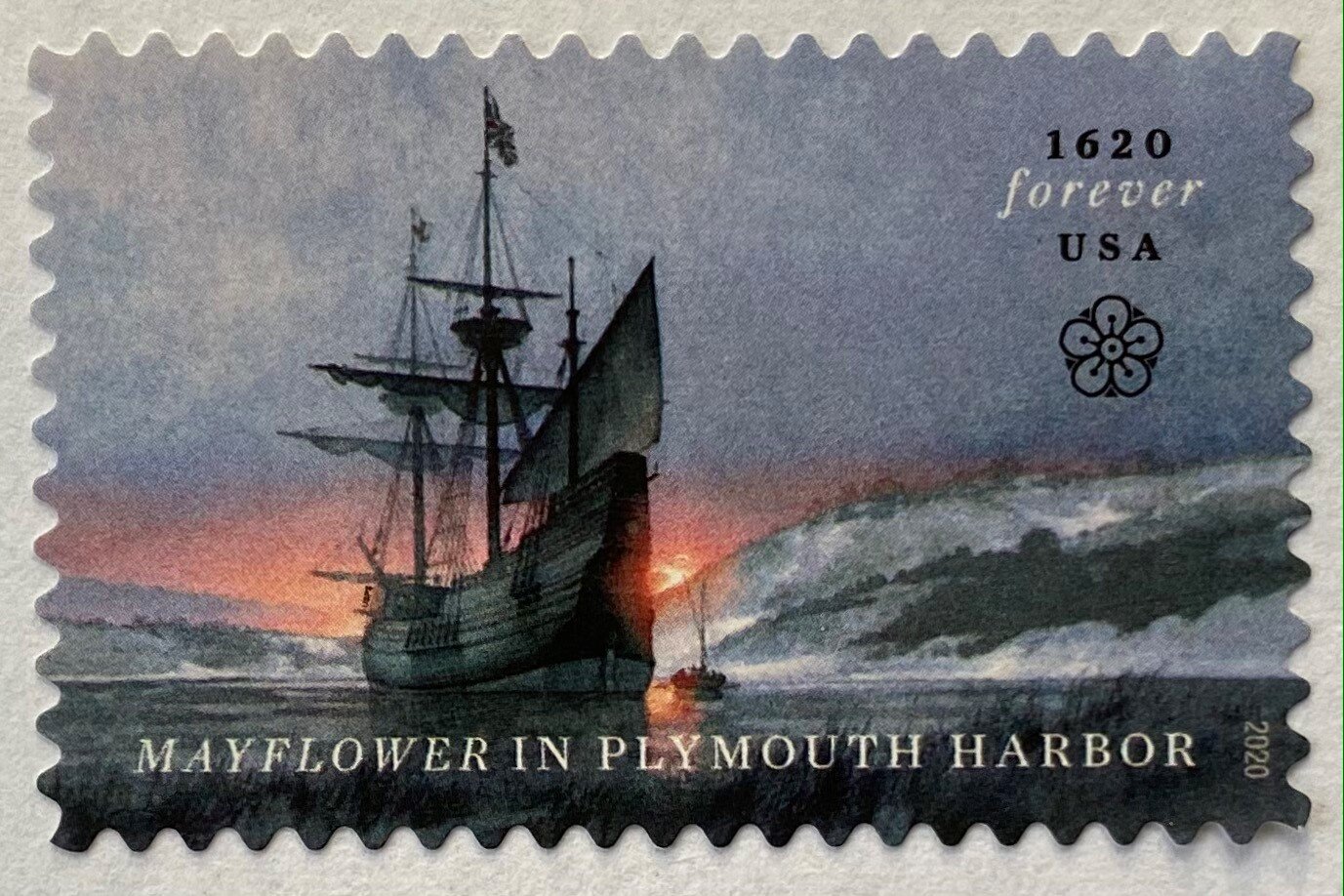On November 21, 1620—400 years ago—the Mayflower made landfall off Cape Cod, ending the Pilgrims’ 10-week ordeal of crossing the Atlantic during storm season in a modest little cargo vessel that until then had been used mainly for transporting textiles and wine between England and France. The Mayflower, like its passengers, was making its maiden voyage across an ocean, too.
For the next five weeks, scouting parties ventured ashore to find a suitable place to settle. Eventually they determined that the fine harbor at Plymouth with its high ground and fields was the best option. With the New England winter pressing upon them, they came ashore the day after Christmas 1620. William Bradford (their chronicler and later governor) recorded,
“Being thus arrived in a good harbor, and brought safe to land, they fell upon their knees and blessed the God of heaven who had brought them over a vast and furious ocean . . . to set their feet on the firm and stable earth.” Bradford remarked later that “before them was a wilderness and behind them the ocean. The only direction they could look to was upward. . . . What could now sustain them but the Spirit of God and His grace?”
Coming to the New World sounds grand and heroic. But at the time, there was no Welcome Wagon waiting—only the winter wilderness before them and the windswept ocean behind them. They numbered about 100 souls, but half of them would be dead before spring. Fearful to reveal their vulnerability to threatening Indian tribes in the area, they buried their dead at night in unmarked graves, smoothing the earth over their loved ones to conceal their losses. William Bradford’s eyewitness account, Of Plimoth Plantation, records many stories of prayer and God’s provision—some quite remarkable, even miraculous. But these punctuate days of misery, isolation, starvation, and untimely graves.
Why would they risk and suffer so much? Today the little Plymouth colony is mostly remembered for making Thanksgiving feasting famous; but in their day, they weren’t known for turkey and dressing. They were known as persecuted Christians. Because of the imprisonment of their pastors and incessant pressures on the church, these Christians fled England for Holland—and then Holland for the Massachusetts wilderness. That’s why they crossed an ocean, and that’s why we call them “pilgrims.”
The arrival of the Pilgrims laid a cornerstone of religious freedom and self-government that would shape the character and constitution of the future nation. Those blessings have been felt by Americans of many religions—and of no religion—for four centuries now. But as a Christian, I see so much more in the Pilgrims’ story than Thanksgiving holidays and First Amendment rights because they were committed to the Gospel, to a God-shaped life, and to a costly obedience to God’s command to gather in a Word-centered community of worshippers. Though centuries and continents separate them from those long-ago Pilgrims, I have seen their likeness in the faces of Christians gathered in little house churches meeting in the shadows of mosques or congregations who worship in places where police raids are frightfully common. The Family resemblance is unmistakable.
Perhaps centennials are not what they used to be, but 400 years is a big deal! And yet, besides a beautiful commemorative stamp, relatively little has been made of this Mayflower milestone. In contrast, over the past year the 1619 Project has made lots of news. It’s a freshly-minted, race-based rewriting of American history that frames all the great moments and motivations of the American story as one continuous narrative of racial oppression. It’s propaganda written in past tense that Peggy Noonan calls “historical vandalism.” If you aren’t familiar with the 1619 Project, don’t worry—it will doubtless be coming to a school district near you.
But 1620 marks an important moment both for Americans and for Christians. This struggling band of believers would become the unlikely vanguard of a great host who came to these shores and shaped a nation—not perfectly, but their imprint would be stamped upon America’s laws, schools, reforms, culture, and freedoms. The Pilgrims’ descendants (spiritually and literally) would also make their own pilgrimages to take the Gospel to the ends of the earth; so perhaps this rich legacy should be called the 1620 Project!
Every November I like to reread these Pilgrim stories. As a pilgrim, too, their perspective gives me fresh perspective. We’re not facing a wintry wilderness with our backs to an icy ocean, but as Christians we all face our own tests of faith, our own dark patches in the path, as we follow our Cross-bearer. The upward look to our King—rather than the downward focus on our circumstances—holds us as we remember His steadfast love. Such love is so strong that “neither death nor life”—nor oceans or wildernesses or unanswerable questions or untimely graves—“nor anything else in all creation, will be able to separate us from the love of God in Christ Jesus our Lord” (Romans 8:38-39).

